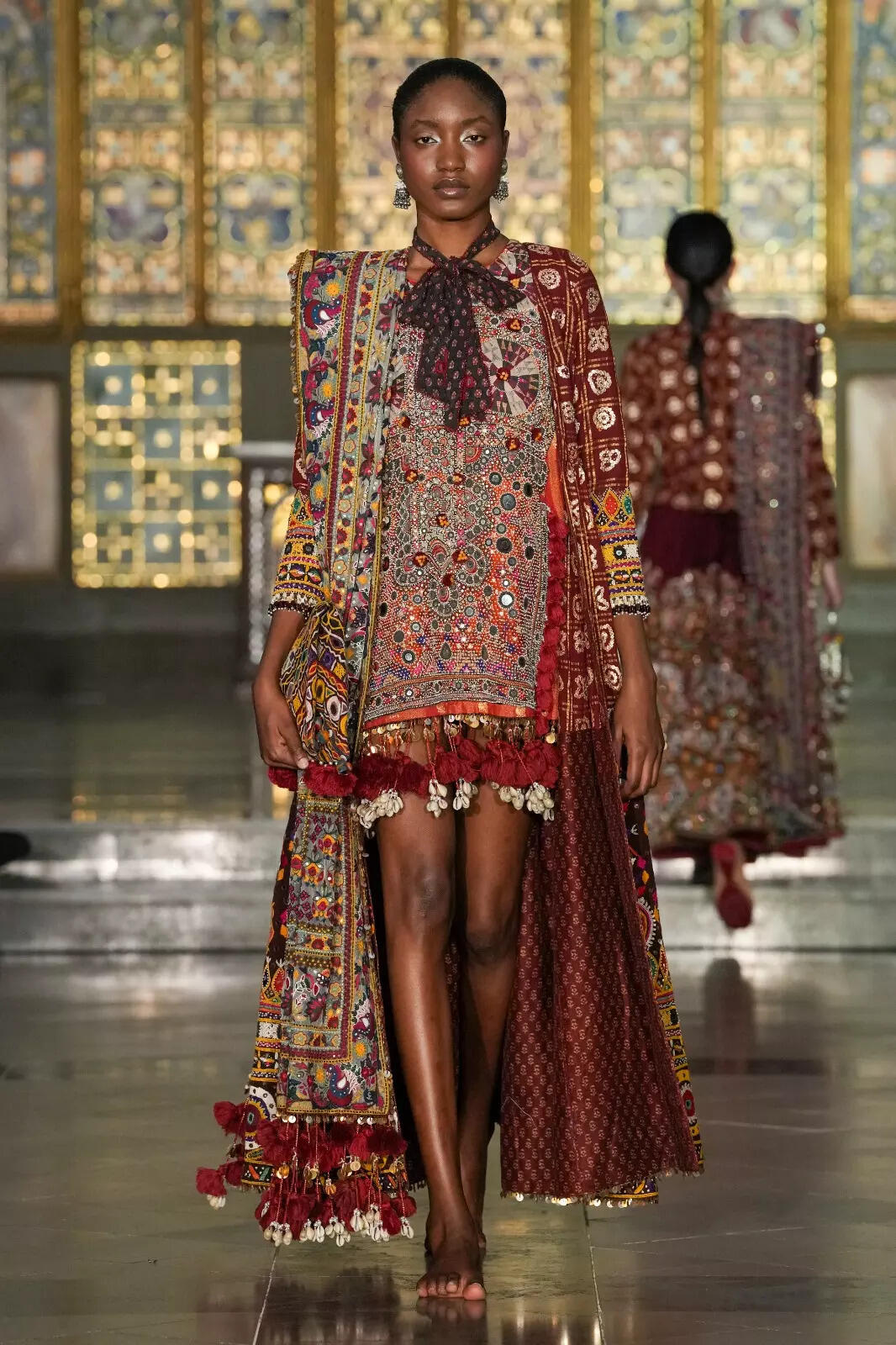
*model wearing a Jigya M Collection
Historic-
In 1983, the British Fashion Council was formed followed by the first official LFW in 1984. LFW is part of the Big Four fashion weeks and is celebrating over 40 years in the industry! LFW has always thought to be emblematic in featuring styles that verge on fearless imagination. Interestingly, themes tend to be rooted in the historical evolution of fashion over periodic eras.
Precedence –
What we personally love at WW is the liberation of the designers and tongue-in-cheek moments reserved for LFW. The most iconoclastic moment being Katharine Hamnett’s t-shirt featuring the words “58% Don’t Want Pershing” a stance against nuclear war; and effectively eponymizing slogans on clothing. LFW in essence sets out the season’s tempo and having a template to fall on to as a base to build on, becoming easier to add one’s personal flair.
However, it’s not simply the collections that are a Picasso masterpiece, but the venues too! From the most bizarre and mundane to the most gobsmacking settings. In fact, the first ever LFW took place at a car park- The Commonwealth Institute’s car park, Kensington to be more precise. In so doing, fashion is seen to be transient and no longer a culmination of one venue equals one style; rather, one look defines one’s style.
Iconic-
Past LFW collection layouts are very similar to today’s, albeit, the only change these days being insisted on from designers is a visual display referencing the inspiration of the collection. In many cases, these eclectic and rather unorthodox collections eventually get toned down for retail; however their original flamboyance is preserved to create the visual sizzle.
New and budding fashion influencers-
The 90’s fashion explosion brought the likes of the legendary Alexander McQueen eventually evolving to feature global designers such as Hussein Chalayan. In fact, fashion hoarders/boarders/lovers/simply-can’t-have-enough types can also be seen in the invitee list from royalty to musicians to influencers and socialites.
From a numbers perspective, an estimated 1,500 international students enroll in British fashion courses every year, and a significant number come from China and East Asia; leading to a wide array of a powerful blend of fancy fabrics and tactile textures rooted in cultural nuance.
Play on styles and fabric-
Curated collections at LFW influence style, colour, down to the shades that are considered the season’s hot picks as well as focusing on craftsmanship from printing techniques and stitching details to textile designs. Interestingly, parallel to The Big Four, off-spin fashion shows take place featuring debutante designers and have since become hunting grounds from bigger fashion houses on style mergers or artist adoptions.
Take for instance the Bajikurong fashion and sari pant suit with a blazer look. This easily and effortless switching between ethnic representation and other outfits makes one’s identity enshrined within their environment but on a spectrum of one’s openness. Another exemplary example is of Jigya M’s homage to her Gujarati roots using gharchola bandhej and patan patolas on the LFW aisles showing how daring and yet rooted fashion can be.
Sustainable-
Fashion has always been used to project an image or a definition of one-self. From Gandhi’s shawl to Mao’s suit and Diana’s dresses, each individual came to be associated with an emotive arising from a particular type of apparel that eventually became a part of their ‘look’. More and more equivocally around the globe, fashion and politics are intertwined, from President’s, First-Wives to Royalty, we see fashion as being a transformative tool in portraying the political views. From Peng Liyuan, wife of Xi Jinping’s modest Chinese wardrobe symbolizing patriotic values, to Rosmah Mansor’s over-indulgence in Birkins indicating a lifestyle of gross-luxury and surrealism in Malaysian politics, fashion is a powerful weapon of words said and unsaid; a poets indulgence and an eccentric’s grenade.
Nonetheless, it is this inter-twining of fashion and politics that has also led to concepts such as recycling, upcycling, re-purposing, carbon credits to name a few. And at Woven Winds, we live for sustainable practices!

